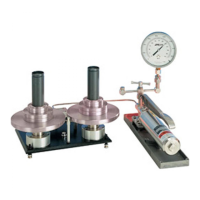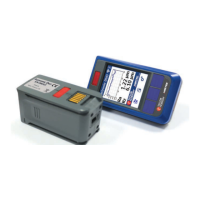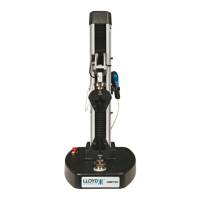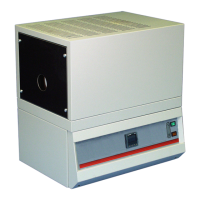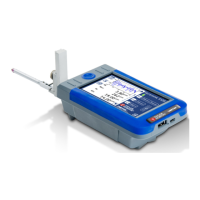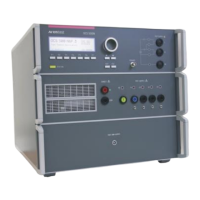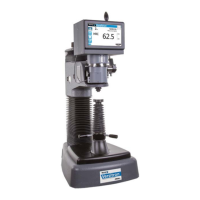The custom function uses the Calendar-Van Dusen equation for
outputting and measuring custom RTDs. The coefficient C is only used
for temperatures below 0°C. Only A and B coefficients are needed for
the range above 0°C, so coefficient C should be set to 0. The R0 is the
resistance of the probe at 0°C. The ITS 90 coefficients for PT385,
PT3926, and PT3616 are shown in Table 4.
Table 4. RTD Coefficients
RTD Range(°C) R0 Coefficient A Coefficient B Coefficient C
PT385 -260 - 0 100 3.9083x10-3 -5.775x10-7 -4.183x10-12
PT385 0 - 630 100 3.9083x10-3 -5.775x10-7 ---
PT3926 Below 0 100 3.9848x10-3 -5.87x10-7 -4x10-12
PT3926 Above 0 100 3.9848x10-3 -5.87x10-7 ---
PT3916 Below 0 100 3.9692x10-3 -5.8495x10-7 -4.2325x10-12
PT3916 Above 0 100 3.9692x10-3 -5.8495x10-7 ---
5. Using Isolated Measure Modes (Upper Display)
5.1 Measuring volts and mA
Use the following steps to measure the voltage or current output of a
transmitter.
1. Select the upper display from the Main Menu.
2. Select the desired primary parameter to be measured. Connect the
leads to the isolated inputs of the calibrator, as in Figure 16.
Figure 16. Isolated Input Connection
5.2 Measuring current with loop power
To test a 2-wire, loop powered transmitter that is disconnected from wiring,
use the loop power function. This function activates a 24V supply in series
with the current measuring circuit. To use this option proceed as follows:
22
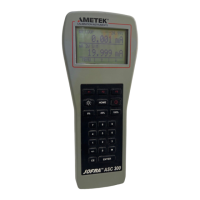
